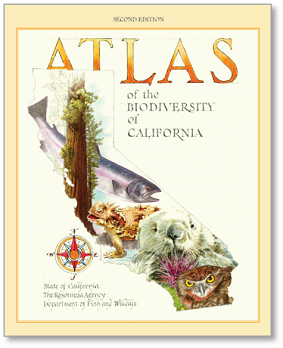About the Atlas

CDFW is proud to present the second edition of the Atlas of the Biodiversity of California, featuring new and updated maps that reflect changes to our understanding of the natural world and the impacts humans are having upon it.
This book is a collection of maps, stunning photographs, and artistic illustrations — all depicting the state's rich diversity of plant and animal species. It includes over 100 nature photographs, 50 full-color maps, and 12 wildlife illustrations by Dugald Stermer, a well-known author and artist.
Featuring articles by dozens of experts from the Department of Fish and Wildlife and beyond, the Atlas covers an array of topics, such as the state's remarkable geography, how we measure biodiversity, and examples of the complexity and uniqueness of many of California's treasured wildlife habitats. The book explores profound and interesting concepts regarding California’s biodiversity, including current threats, restoration strategies, and species and ecosystem protection.
From college students to outdoor enthusiasts, environmental planners to policy makers, the Atlas of the Biodiversity of California, Second Edition, will appeal to anyone with an interest in California's biological resources.